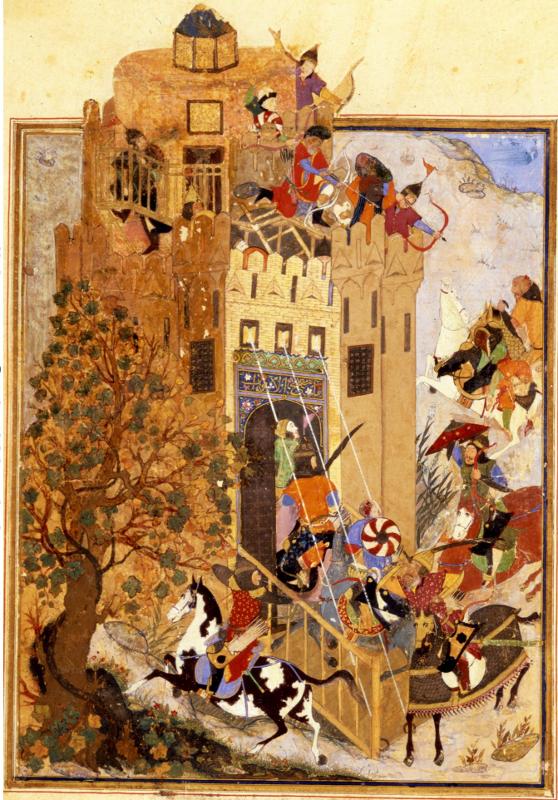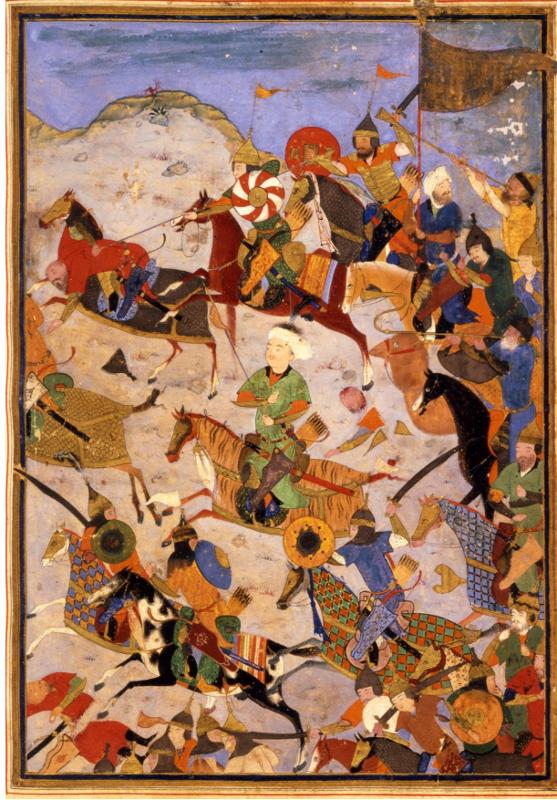
Try Amazon Fresh
Illustrations of Timurids in the Zafarnama of Sultan Husayn or ‘Garrett Zafarnama’
Troops of Timur attacking the city of Khiva/Urganj
 A larger image of Troops of Timur attacking the city of Khiva/Urganj (left) |
 A larger image of Troops of Timur attacking the city of Khiva/Urganj (right) |
